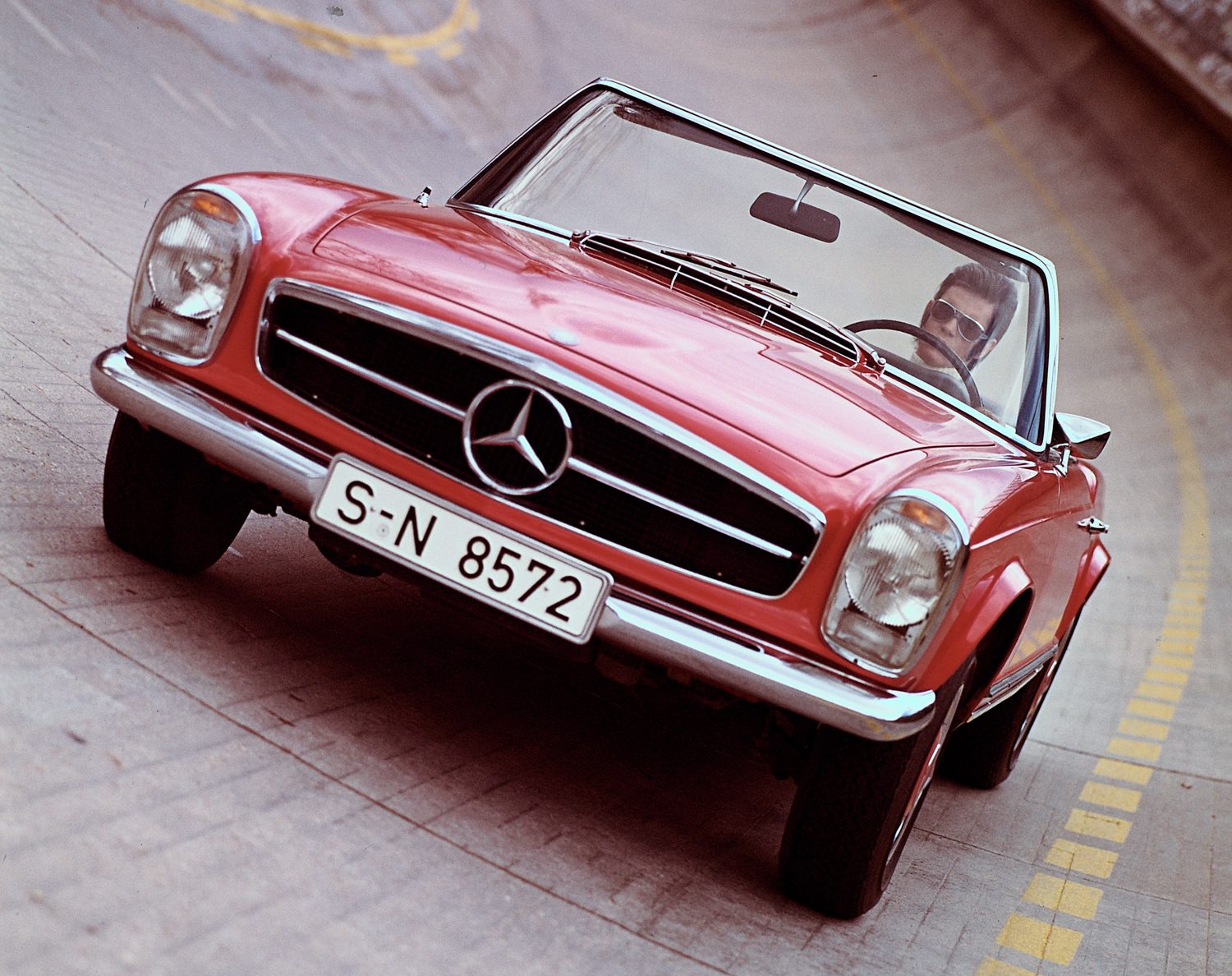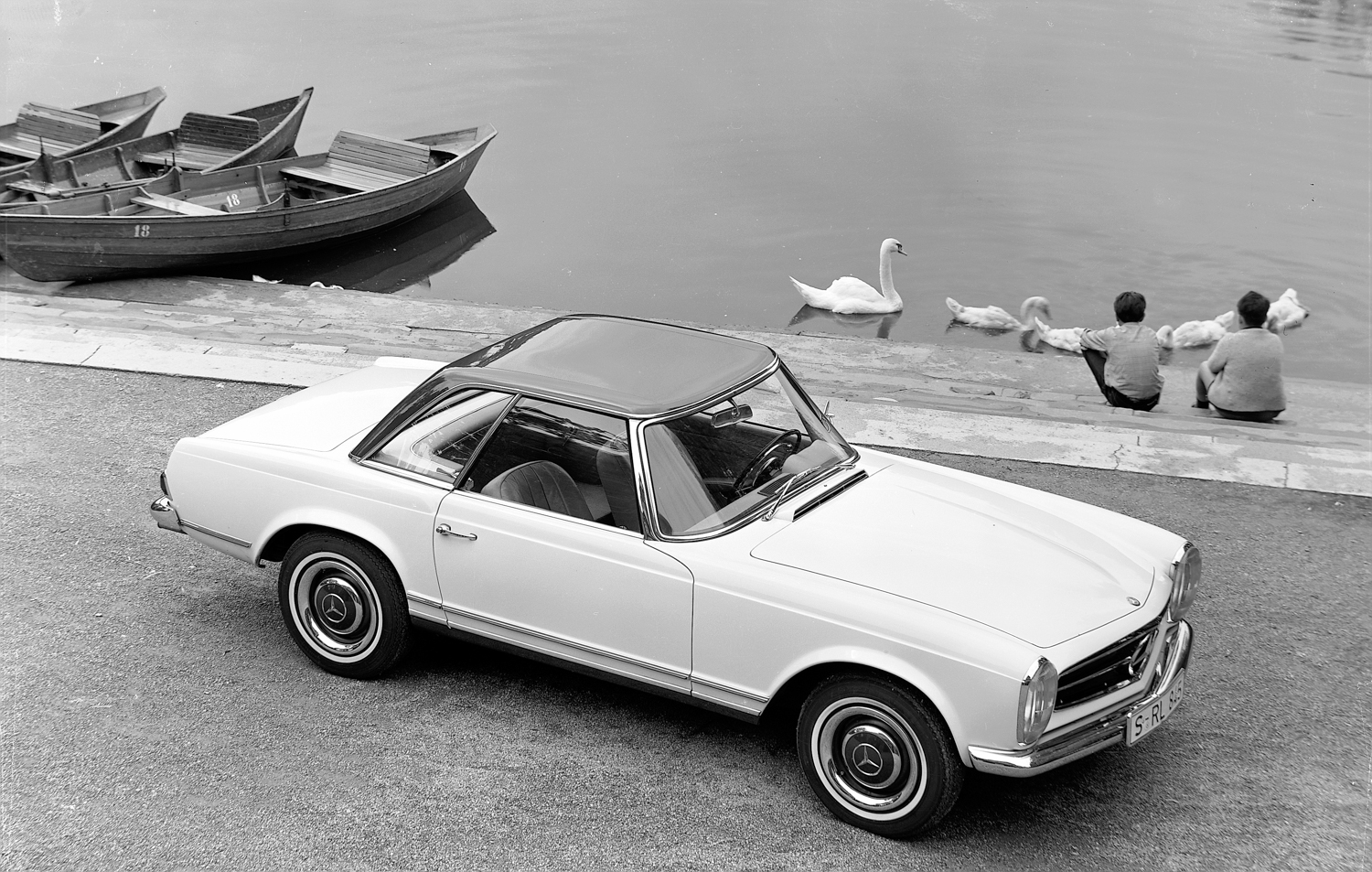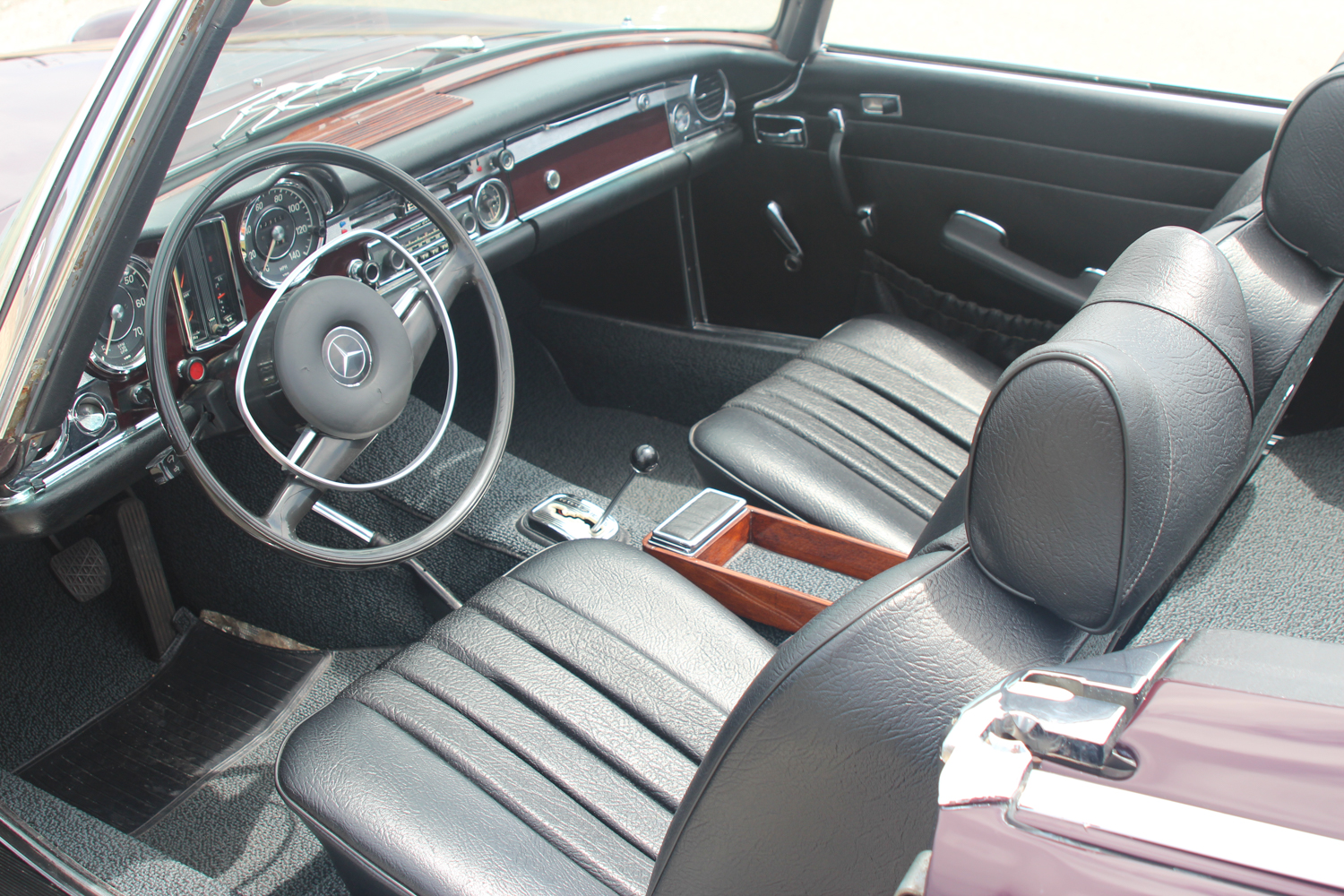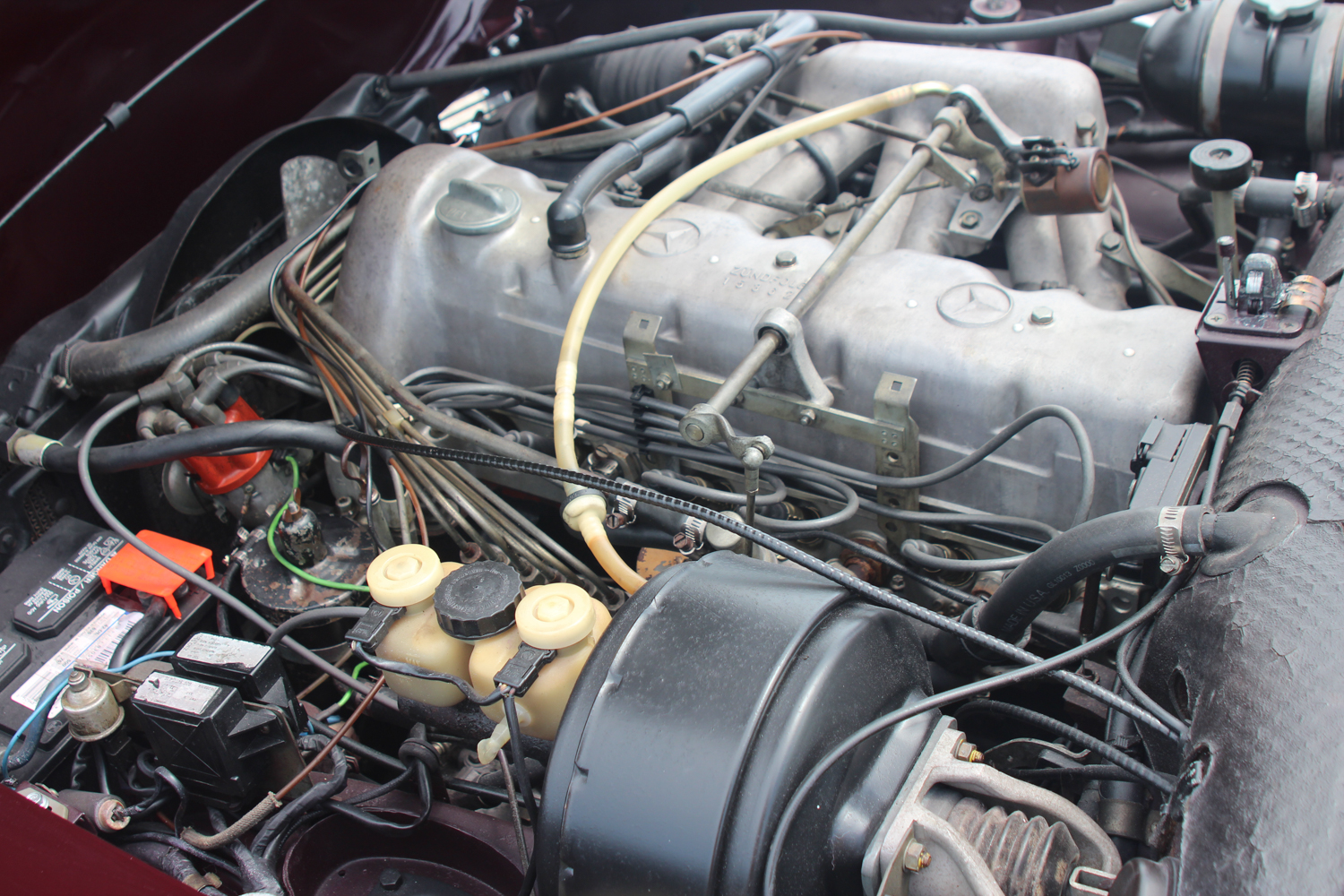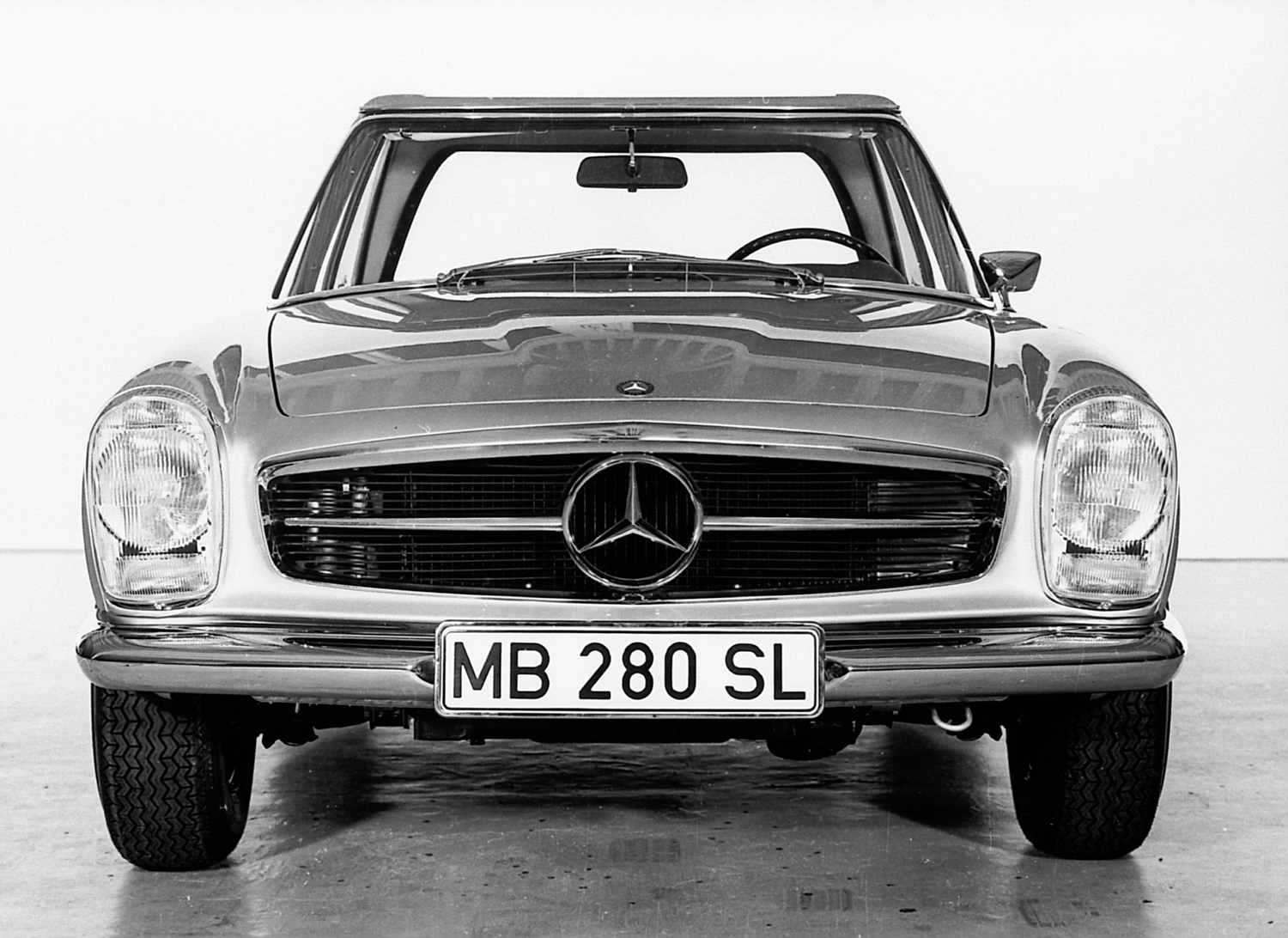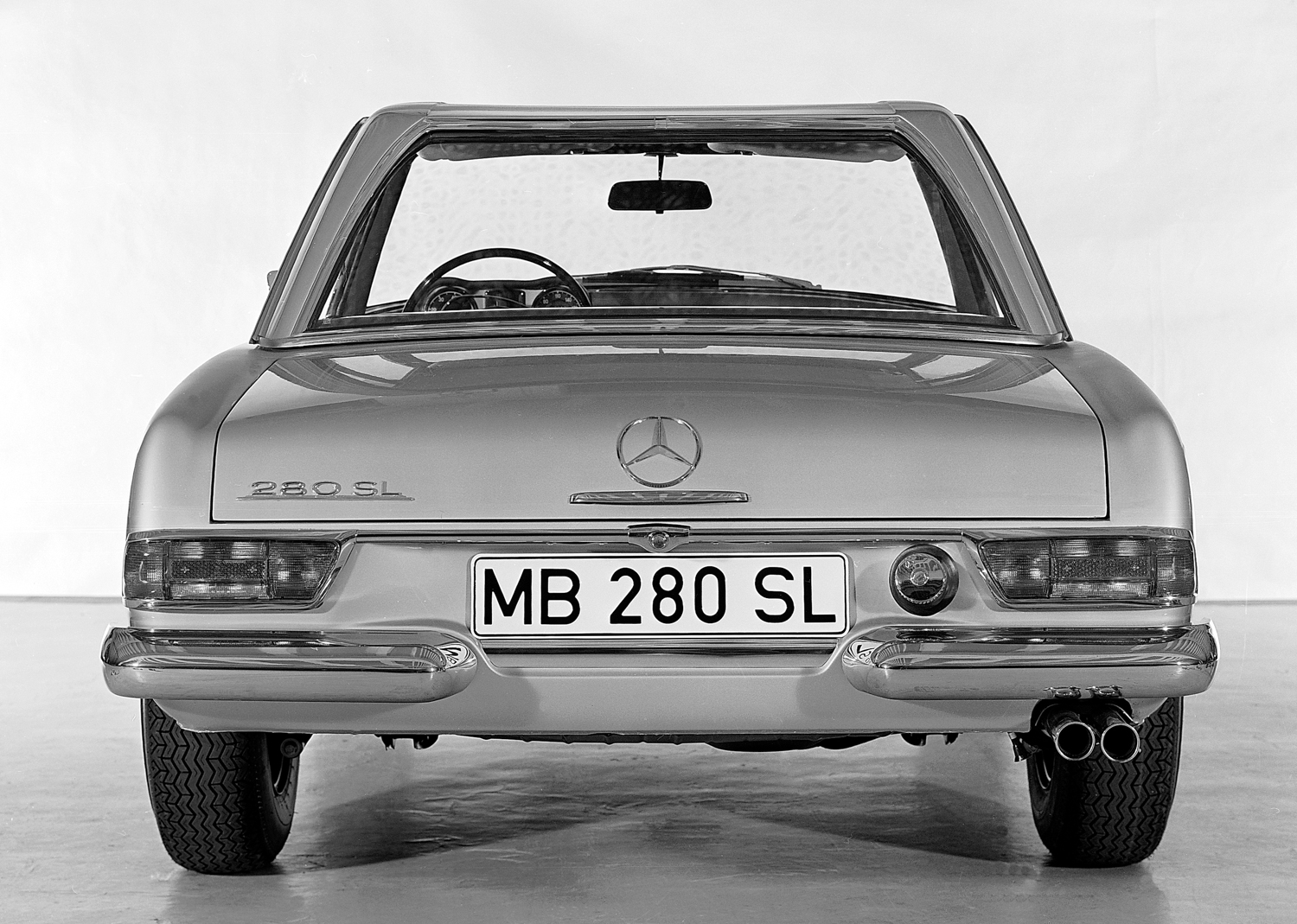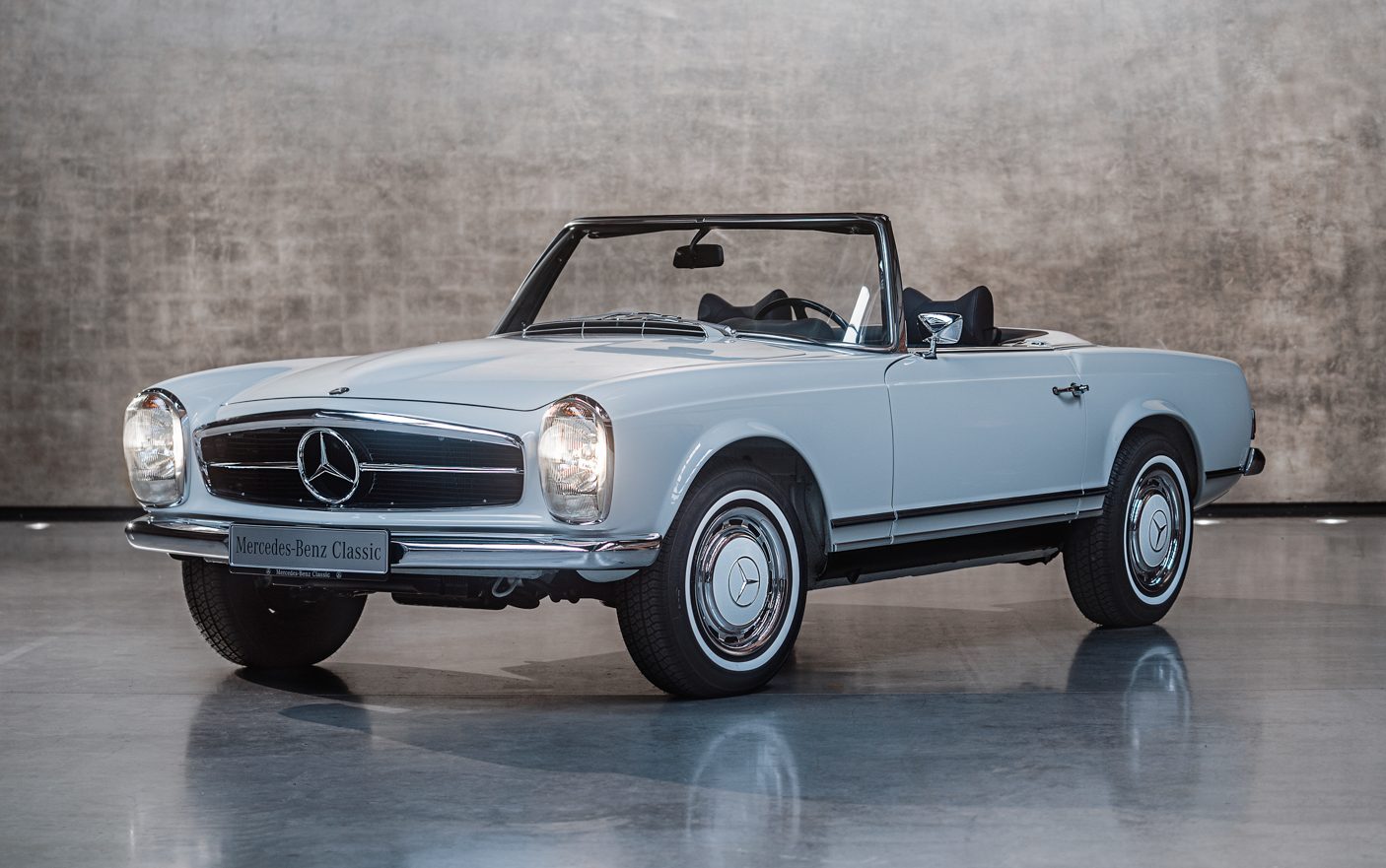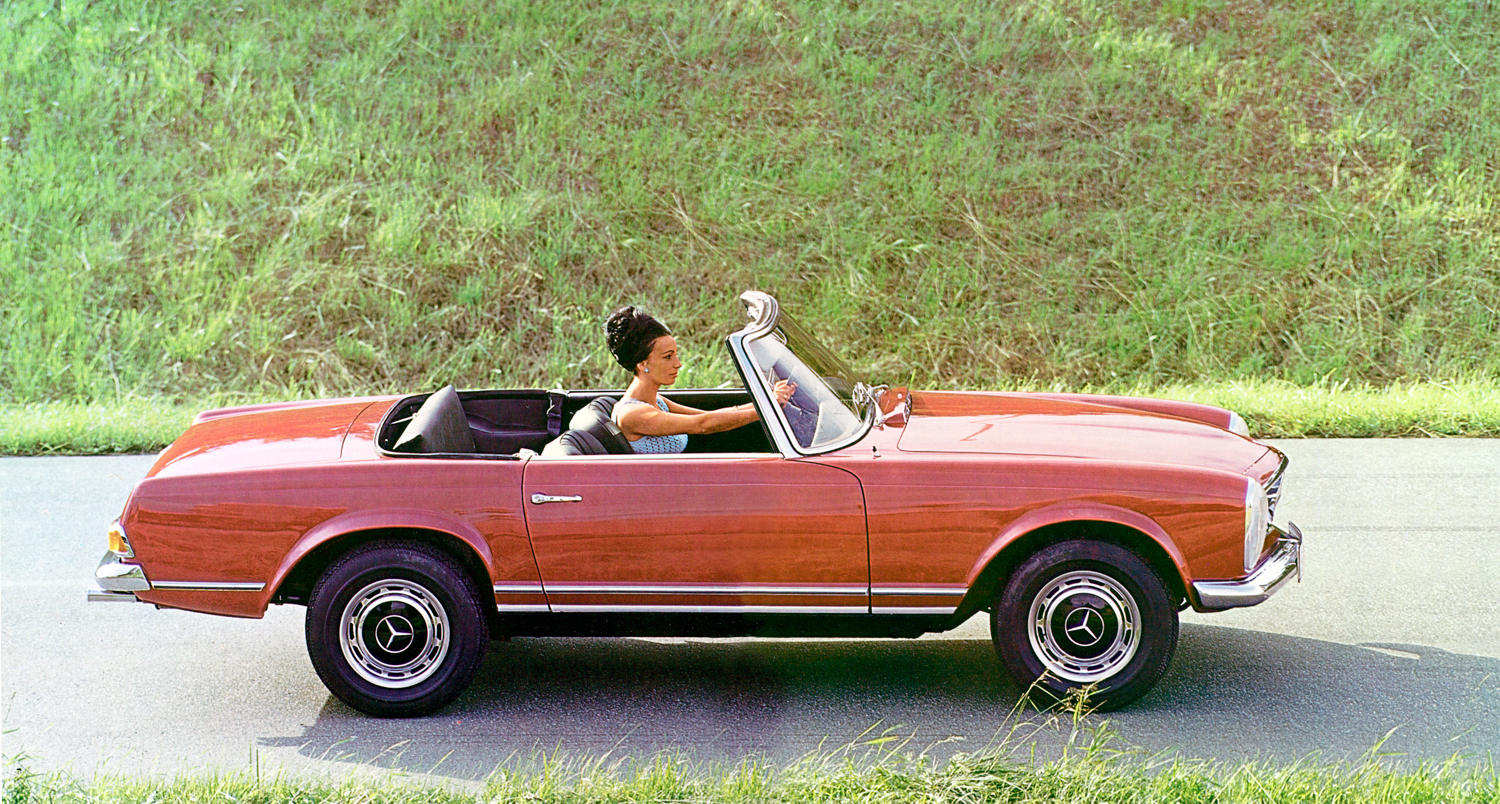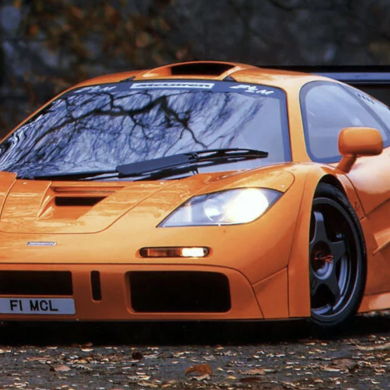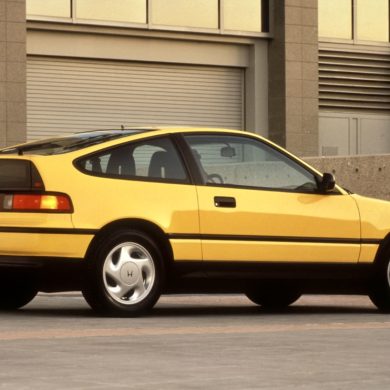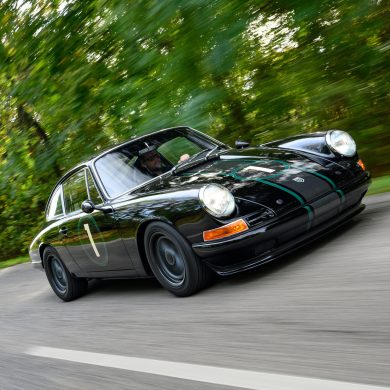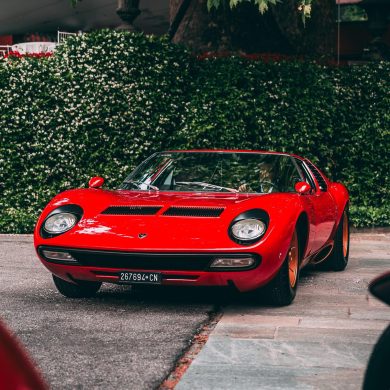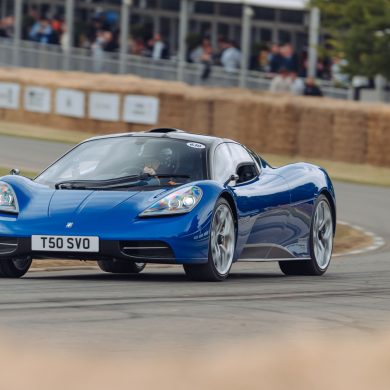We purchased a 1964 Mercedes-Benz 230 SL in the early 1980s. The car came out of Dekalb, Georgia, so it already had the prerequisite rust as typically found on these cars. Confined to trunk and under-seat sections, we were able to patch those areas, which was consistent with repairs performed on these cars back when they were $5-10k fun cars. No one really restored them, rather they enjoyed them as original examples. Wondrously simple, easy to use, and surprisingly serviceable, ours never failed to start. By 1985 my brother and I decided to spend a bit of money on it, refinishing the paint, redoing the leather interior, and reconditioning the wood trim. The trusty 230 SL served us well into the early 2000s when we finally sold it with more than 200k miles. These days, while those same desirable traits still apply, great examples of this series from 230-280 SL command six figure prices, and rightly so. Despite being more than half a century old, the overhead cam, light weight, nimble, and delightfully easy to use convertible still wins hearts across generations.
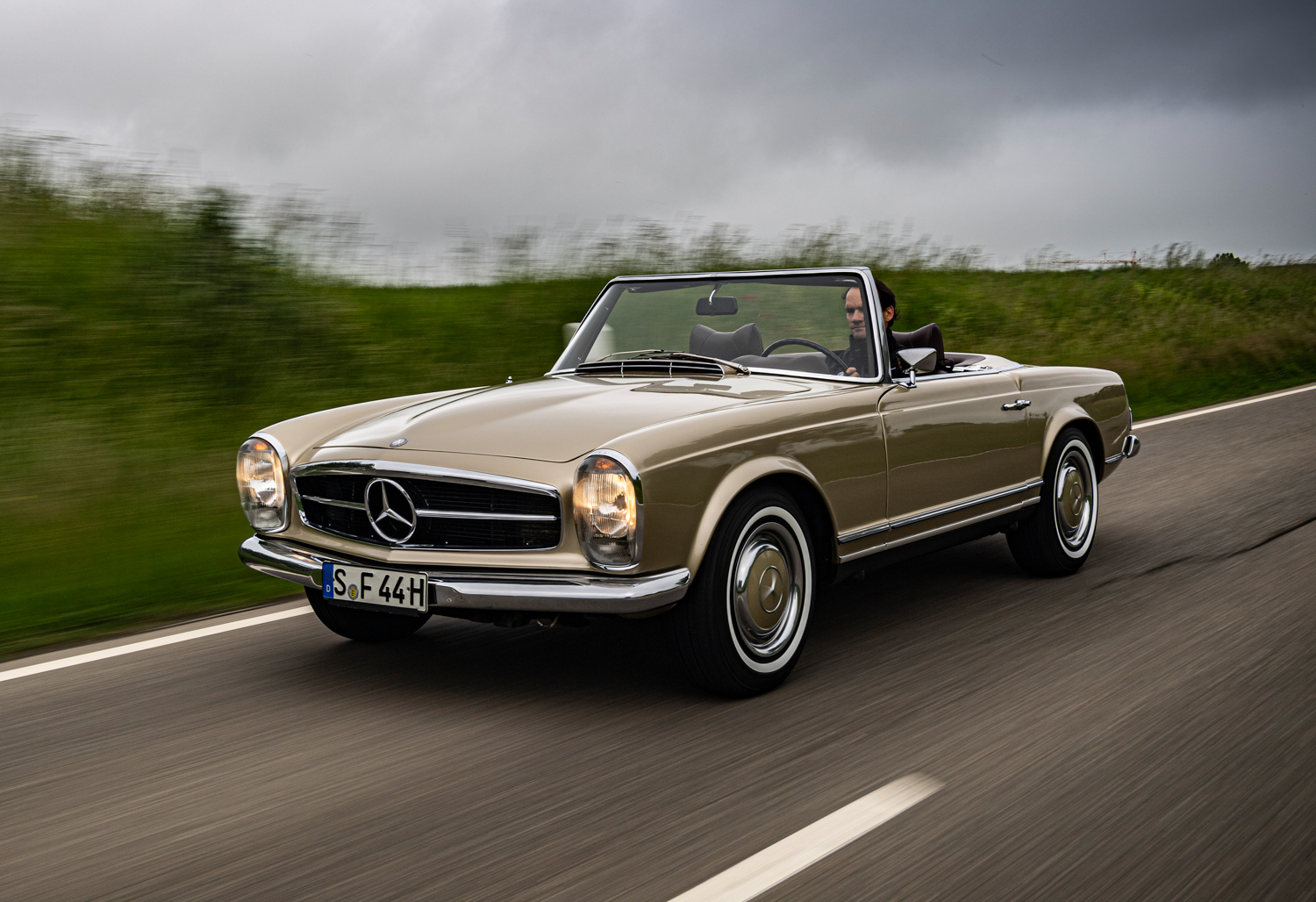
With a history spanning a century of superb automotive craftsmanship, Mercedes-Benz continues today as a premier automobile innovator, delivering vehicles of superior performance and optimum luxury without compromising on safety or durability. During the 1950s, decades of racing achievement and luxury refinement served Mercedes-Benz quite well, especially as North American markets matured, extending the brand to new buyers, building on the successes of the 300 SL and 190 SL models.
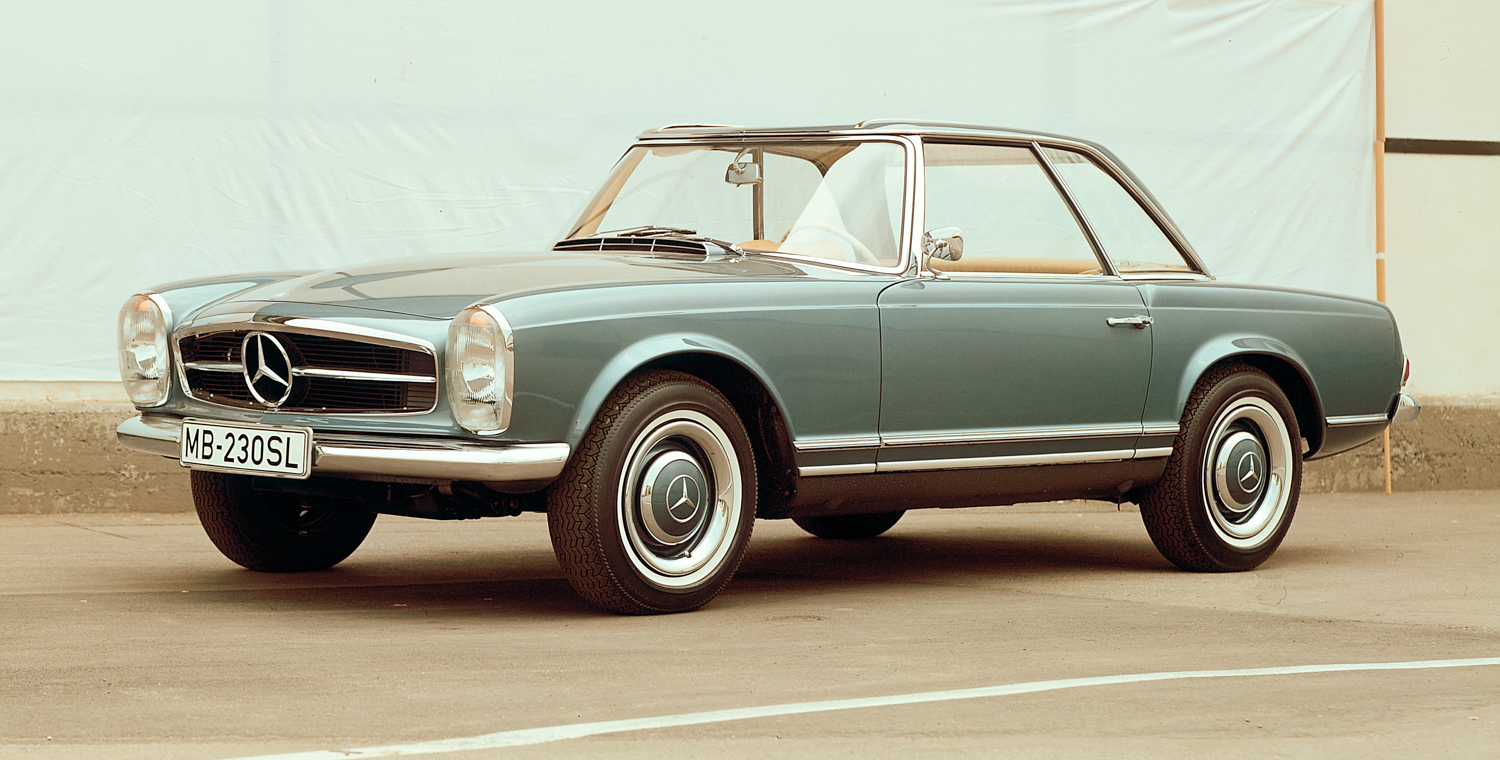
The mid-’60s proved to be a rapidly changing time for sports cars. Not just for Mercedes-Benz, but for all manufacturers in the automobile market. The budding 230 SL was slated to replace both the 190 SL and the iconic 300SL – an ominous task as the 300 SL was a massive performance car with a huge set of footprints to fill. The 190 SL, however, was nearly the opposite – a mass production car with a practical four-cylinder engine, delightful presence, and lower purchase price. The 230 SL needed to fill a bit of both these markets while offering a contemporary design that ushered in future style and the latest in technology.
The 230 SL delivered on all counts, proving immediately appealing to customers seeking a charming sporty car with clean styling and captivating details, coupled with spirited performance. The clarity and simplicity of design continued under the hood with technical advancements including Bosch fuel-injection, a robust overhead-cam, six-cylinder engine, and 4-speed synchromesh transmission, all of which delivered reliable performance. A convertible top, and substantial trunk space allowed for elegant presence and practical traveling, even over long distances. Among the many features offered in the car, several innovative safety aspects were incorporated into the unique body design including being the first sports car with a rigid passenger cell and designated crumple zones, industry standard today, but thoroughly new for a sports car in 1963.
Under the design direction of Friedrich Geiger, Paul Bracq and Bela Barenyi penned the design combining weight reduction efforts which included sparse trim, lightweight body materials, and clean uncluttered design elements. Debuted at the 1963 Geneva Motor Show, the 230 SL was an instant hit with buyers. Safe, fast, and visually ahead of the former round fender cars that dominated the 1950s, the 230 SL was almost immediately iconic even for those who were not sports car minded.
How good was the 230 SL as a performance car? In 1963, Mercedes-Benz Chief Engineer Rudolph Uhlenhaut dispelled any doubt on a closed short course racetrack where the 230 SL matched, within .2 seconds, Gran Prix driver Mike Parkes’ course time in a Ferrari 250 GT. The 230 SL was not only fast, it sold remarkably well with sales of nearly 50,000 units culminating the nine-year run that concluded with the 280 SL.
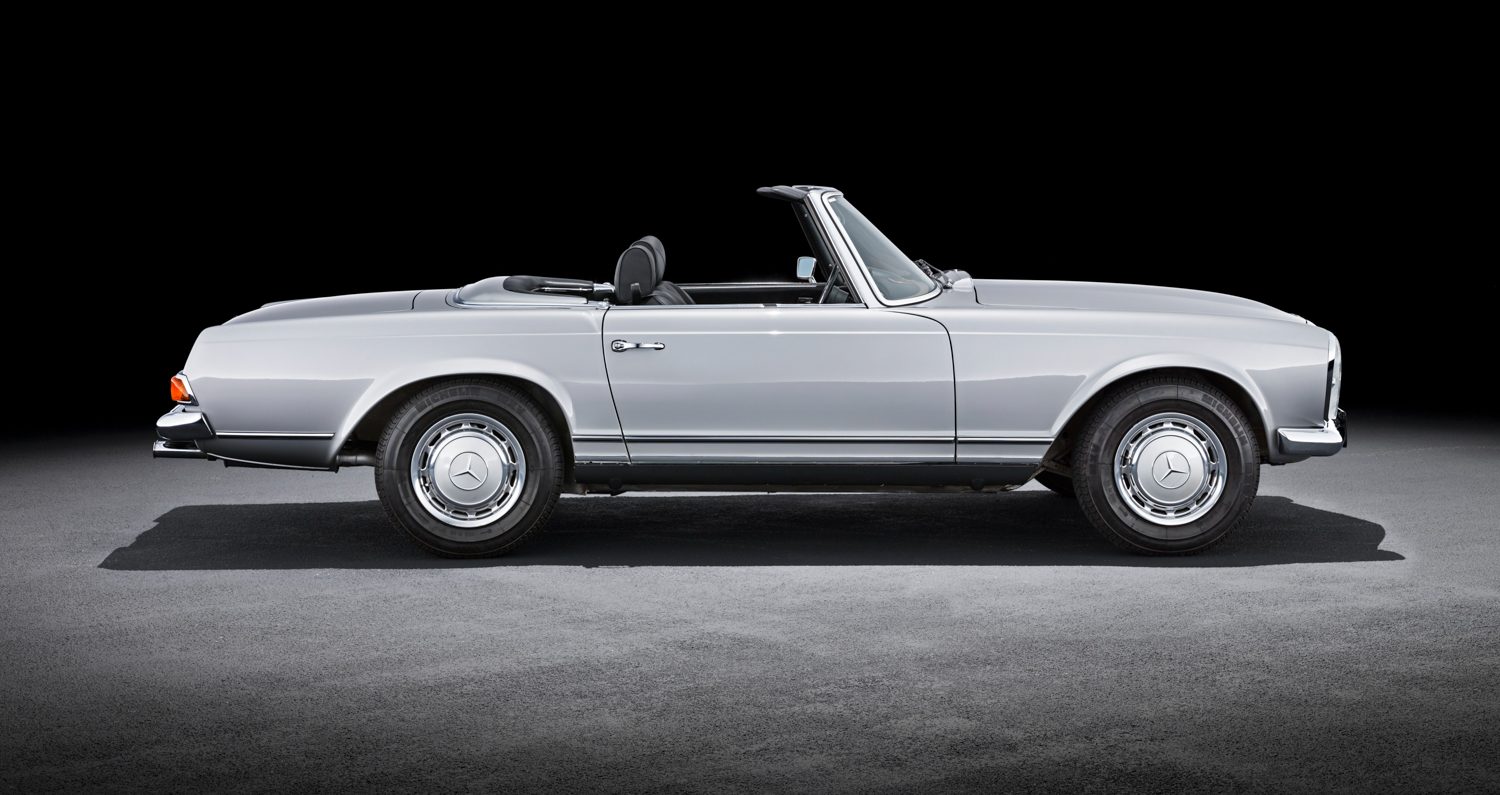
Although nearly all automobile design is the result of careful teamwork, there is no dispute that the design of the 230 SL is largely the work of Frenchman Paul Bracq. Having already earned the praise of his employers with the W108, Bracq set a careful and composed hand toward the design of the 230 SL. For starters, the length to width ratio was surprisingly bold. Packaged with a short wheelbase, short front overhang, and an ample trunk, it is easy to see how these proportional challenges could have wound up awkward or stilted, especially given the height of the car. But Bracq carefully sculpted the body lines with a linear formality using clean lines, a simple broad grille, and trailing fender flairs. In side view, the long door almost exactly divides the car into three distinct segments, while the upright windshield is cleverly disguised by the forward leaning hardtop lines. This forward motion not only raises your eyes away from the tall roofline, it helps to visually balance the long hood, a feature one hardly expects on such a short car.
The hardtop is itself a unique work of art. Daringly concave, no other car attempted do this as nearly all roof tops are crowned for added visual heft. It’s almost as though someone challenged Bracq saying such a thing could not be done. The term “Pagoda” is still used today to describe these cars and the unique concave roof. But there are other special touches that make the 230 SL unique. The headlights are stacked upright and elegantly finish the front fender corners, with a delicate belt line crease running the length of the car. This element is cleverly echoed with half an inch sculpted on the inside of the front fenders. This feature, often lost when body shops repair front fenders, is a nice detail to know about when inspecting a car for potential front-end damage. Further details include the distinct twin rocker panel trim, the tall cowl intake vent, which echoes the grille opening, and the subtle tail fins concluding the rear fenders.
With the top down, the 230 SL reveals yet another stunning aspect of the design. It’s almost as attractive with the top up as it is with it down, and yet again with the hardtop in place. Few convertibles can offer this distinction. The hard-shell cover for the disappearing top is only slightly raised in profile from the rear cowl, another amazing feat of design and engineering cleverly prepared to complete the design.
Few cars can capture an era so perfectly. The Mercedes-Benz 230 SL delivered a statement of elegance, simple beauty, and cosmopolitan charm that defined the early 1960s. Establishing Mercedes-Benz as leaders in volume production, the 230 SL delivered design excellence, performance worthy of top sports cars, safety, and durability like no other sports car ever had. It’s little wonder that the Pagoda continues to charm generation after generation with its unmistakable looks and delightful performance.


